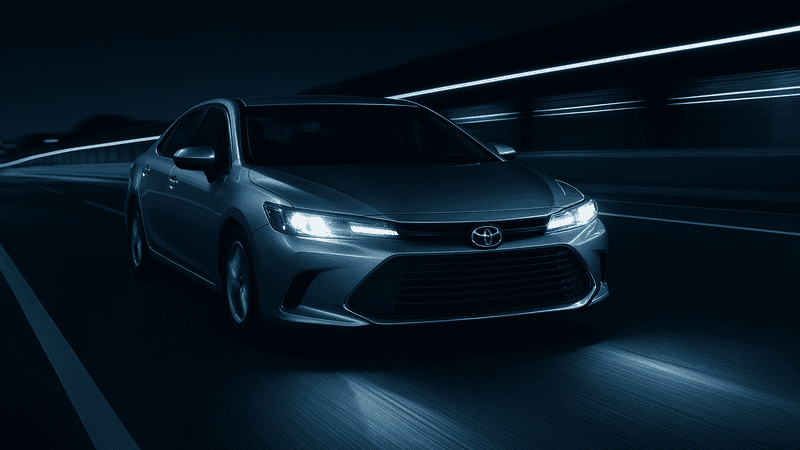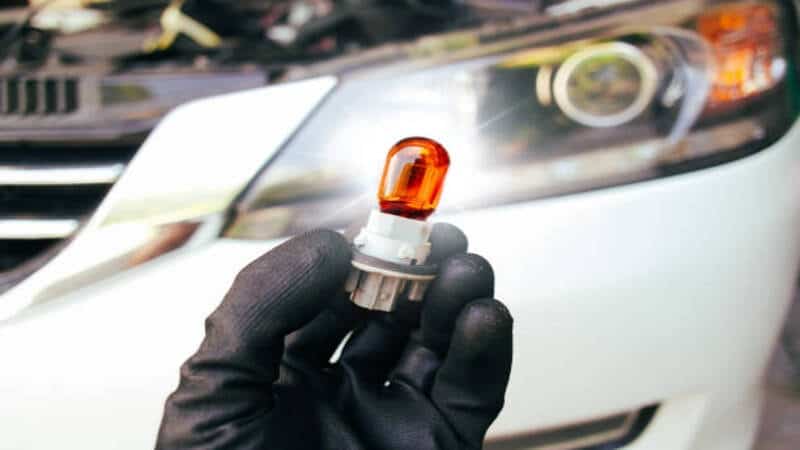In this article, we lift the lid on fan-cooled and fanless headlights. We explain the underlying systems, compare the performance of the two cooling solutions, and highlight what you should consider when choosing between the two. Read on to find out which of these is a better fit for your car.
Understanding the Need for LED Headlight Cooling Systems
A commonly cited fact about LED headlights is that they generate less heat compared to halogen bulbs. Why is a good cooling system so important if this is the case?
The Heat Problem In LEDs
It’s true that LED headlight bulbs consume less power and produce less heat than other types of headlight bulbs. However, even the most efficient LEDs will still convert 50% of the input power to heat, which will likely be higher for a typical headlight LED bulb. This is inevitable and is the result of inefficiencies in the process LEDs use to produce light.

The heat from LED bulbs is also concentrated around the LEDs and isn’t radiated out as with halogen bulbs. Therefore, the heat has to be conducted away from the chip and other sensitive parts of the bulb. This is why any LED headlight bulb will have a heat sink.
Effect of Heat on LEDs
The heat produced by LEDs is nowhere near that of halogen bulbs. However, if not properly managed, it can still affect the performance of the bulb in the following ways:
- The light output of the bulb can decrease as the LED chips heat up
- The color of the light produced by the headlight bulb may start to change
- The lifespan of the LED headlight bulb may be significantly shortened
Fan-Based LED Headlights
Fan-based LED headlights are LED headlights with a built-in fan. The fan helps to dissipate heat from the heat sink quickly and is very effective at keeping the LED temperature low. Fan LED headlights were the main type of LED headlights in the beginning.
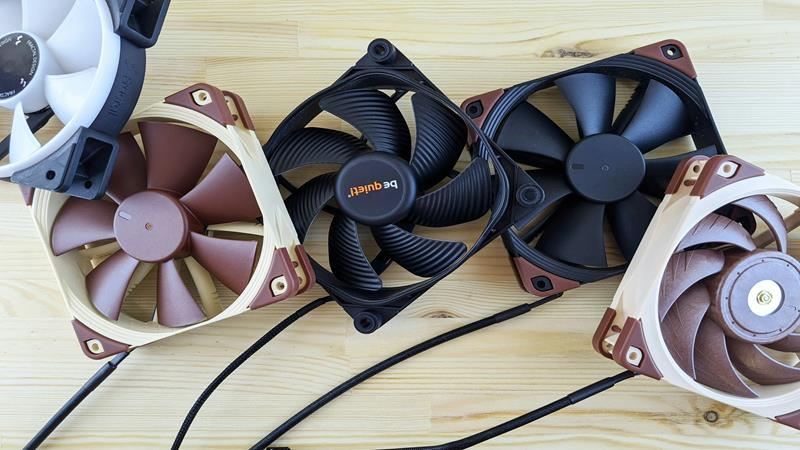
The fans in the bulb increase the rate of cooling by quickly displacing the warm air in contact with the heat sink and replacing it with cooler air. The cooler air can take up more heat than the warm air. This method of heat transfer is called forced convection.
The effectiveness of the fan is determined by various factors including the size, speed, and design of the fan blades. The advantages of fan LED headlights include:
- Highest brightness levels for LED bulbs: The better heat dissipation achieved by fan-based LED headlights means they can draw more power, resulting in a brighter light. A bulb with less cooling capacity will experience faster degradation if it draws a similar amount of power.
- Increased lifespan: The better cooling rate also means the LED chips are degraded less by the heat they generate. The bulb can, therefore, maintain optimal light output for longer before it needs to be replaced.
- Smaller heat sink: Having a fan to improve the rate of cooling means it’s possible to use a smaller heat sink. This can make an LED headlight bulb less bulky.
Fan-cooled LED headlights are not perfect, but many of their disadvantages are conditional. They only apply to some fan-cooled lights and manufacturing quality has a lot to do with this.
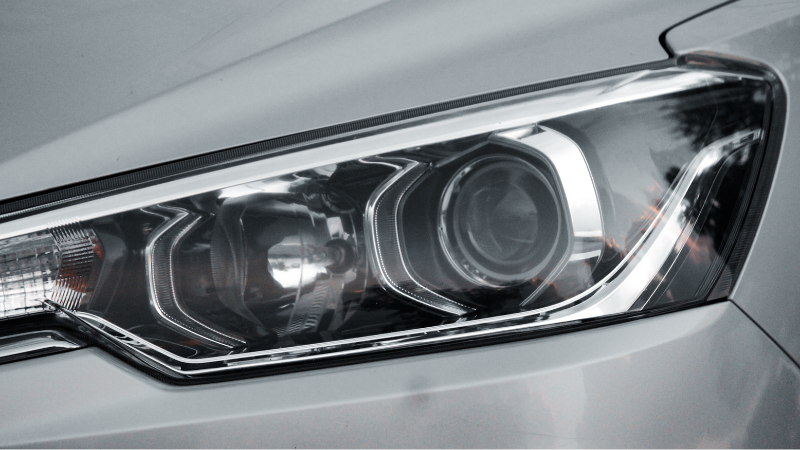
The disadvantages of these headlights include:
- Higher power consumption: Fan-cooled LED bulbs require extra power to operate their fans. This can lower their energy efficiency.
- Risk of fan failure: Having a fan introduces an additional point of failure, especially since a fan has moving parts that can be affected by dust, rust, and dirt. However, this is not a common problem for well-built fan LED bulbs.
- Noise from fans: This is yet another issue with cheaply built LED headlight bulbs. The moving parts can be loud when the fan is running, and the cheap bearings may also wear quickly, leading to more noise.
- Higher Cost: A good-quality fan-cooled LED bulb will cost you more than a good-quality fanless bulb. The use of a fan increases the design and manufacturing complexity, hence the higher cost.
- Space: The fan is mounted on the heat sink and this increases the bulb’s size. The fan also requires enough space for the airflow needed for good heat dissipation.
Fanless LED Headlights
Fanless LED headlights use passive cooling. The heat from the LED is transferred to the heat sink and radiated out via the fins without any assistance from a fan. The result is a lower rate of heat transfer.
The slower heat dissipation means these bulbs get hotter than those that use active cooling. Fanless LED headlight bulbs also require larger heat sinks to ensure there is enough surface area for heat dissipation.
There are two types of fanless LED headlight bulbs. Those with rigid fins and those with flexible fins. The rigid heat sinks are made from an aluminium alloy while the flexible ones are made from tin-coated copper. Their fins can be spread out to maximize the effective cooling area.
The advantages of fanless LED bulbs include:
- Cost: The lack of a fan makes the manufacture of these bulbs less expensive. These cost savings are passed on to the end user.
- No moving parts: The use of passive cooling means that these bulbs have fewer points of failure.
- Noiseless operation: The lack of moving parts also means these bulbs operate without making any noise.
- Adequate light output: These bulbs may not match the brightness of fan-based bulbs, but this doesn’t mean they aren’t bright enough.
- Less space: If properly designed, these bulbs can be installed where there is less space since they don’t have the fan taking up space.

The disadvantages of fanless LED bulbs include:
- Less light output: The lack of active cooling means these bulbs can’t safely draw as much power as fan-cooled bulbs.
- Risk of heat-induced failure: If the heat sink is poorly designed, the poor heat dissipation can compromise the performance and lifespan of your LED bulb.
- Bulky design: Some fanless LED bulbs have very bulky heat sinks to increase the cooling area. This makes installation difficult in some cars.
Fan VS. Fanless LED Headlights: Performance Comparison
The table below summarizes how fan-cooled headlights compare to fanless headlights. The comparison is for standard bulbs available in the market and some exceptions may exist.
| feature | Fan-Cooled Headlights | Fanless Headlights |
|---|---|---|
| Light Output | The brightest LED headlights have fans. The better cooling enables them to draw more power. | These have adequate light output but don’t get as bright as fan-cooled bulbs. |
| Life Span | These bulbs can have very long lifespans with a high-quality fan. The improved cooling lowers the degradation of the LED chip. | These bulbs can have very long lifespans with a moderate light output and a good heat-sink design. |
| Energy Use | Fan-cooled bulbs need more power to run both the fun and the LEDs. | Fanless bulbs need only enough power for the LEDs. |
| Noise | Some fans can be noisy. | These bulbs are noiseless due to a lack of moving parts. |
| Maintenance | A damaged fan may need repairs to save the bulb. | No maintenance is typically required. |
| Cost | Fan-cooled bulbs usually cost more. | Fanless bulbs are usually the cheaper of the two options. |
Factors to Consider When Choosing Between Fan and Fanless LED Headlights
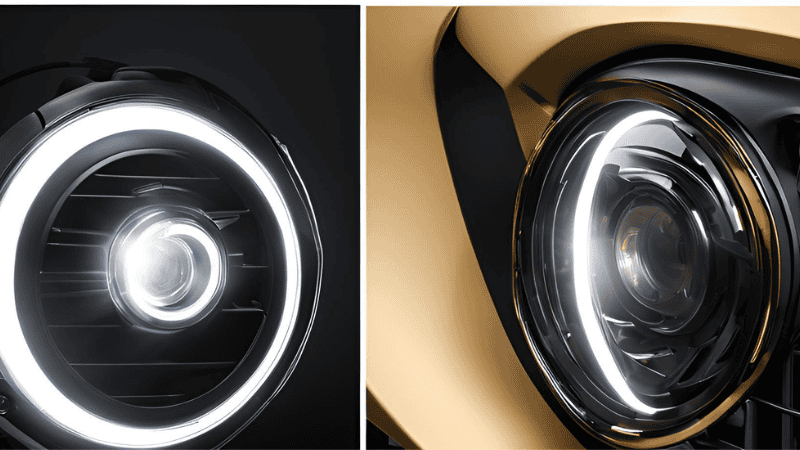
When choosing between these two types of fans, these are some of the factors you should consider:
- Manufacturer: The quality of manufacturing will determine if any bulb is worth it. The advantages of either bulb will be present in high-quality bulbs, but the disadvantages are more likely to show up if the manufacturing quality is poor.
- Budget: The best LED bulbs cost considerably more. If your budget is low, you may not be able to afford a good quality fan-cooled bulb.
- Space: When space is limited, a fan-cooled bulb may not fit inside your car. A fanless bulb with a well-sized heat sink may be the safer bet.
- Desired light output: Fan-cooled bulbs may be brighter but you probably don’t need to have the brightest LED headlights money can buy. A high-quality fanless LED headlight may be bright enough and less expensive.
Conclusion
Fan-based LED headlights have greater light outputs and last a long time if the fan doesn’t fail. On the other hand, fanless bulbs cost less, have adequate brightness, and don’t carry the risk of premature failure due to faulty fans.
Both types of LED bulbs have their advantages, but the main challenge for consumers is avoiding low-quality products of either type. If you stick to a reputable manufacturer, it will be a lot easier to make the right choice for your car.
Get a Quote for Premium LED Headlights – Contact Us Now!
At Carlightvision, our fan-based and fanless headlights are designed to offer great light output for as long as possible. We use high-quality components for our fans and heatsinks, and our designs have been tried and tested by more than 100 brands. Browse through our catalog of products with the confidence that our experts can get you an LED headlight bulb that is built to last.


